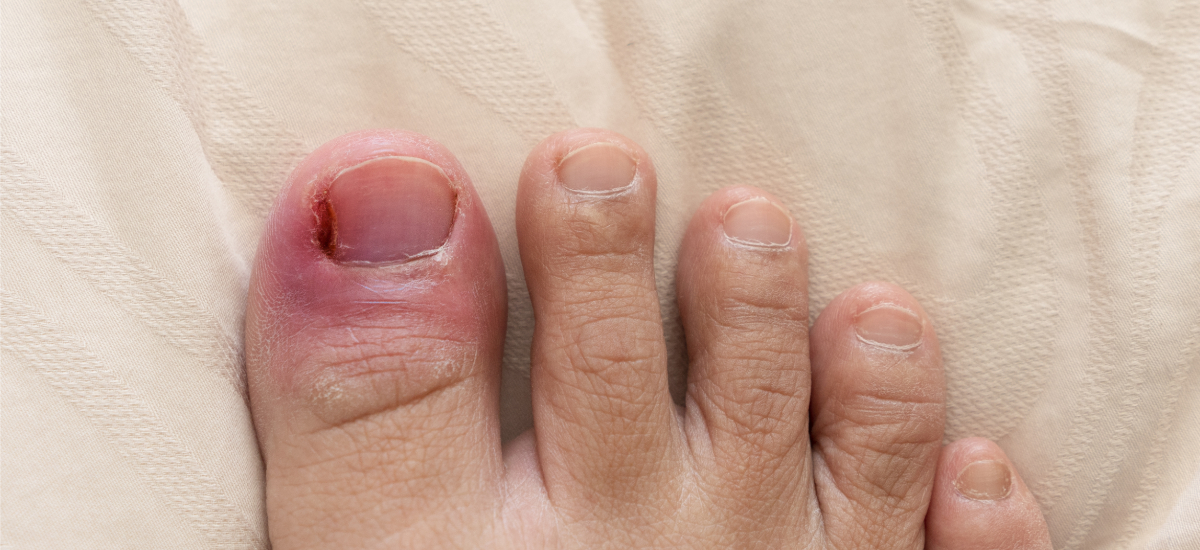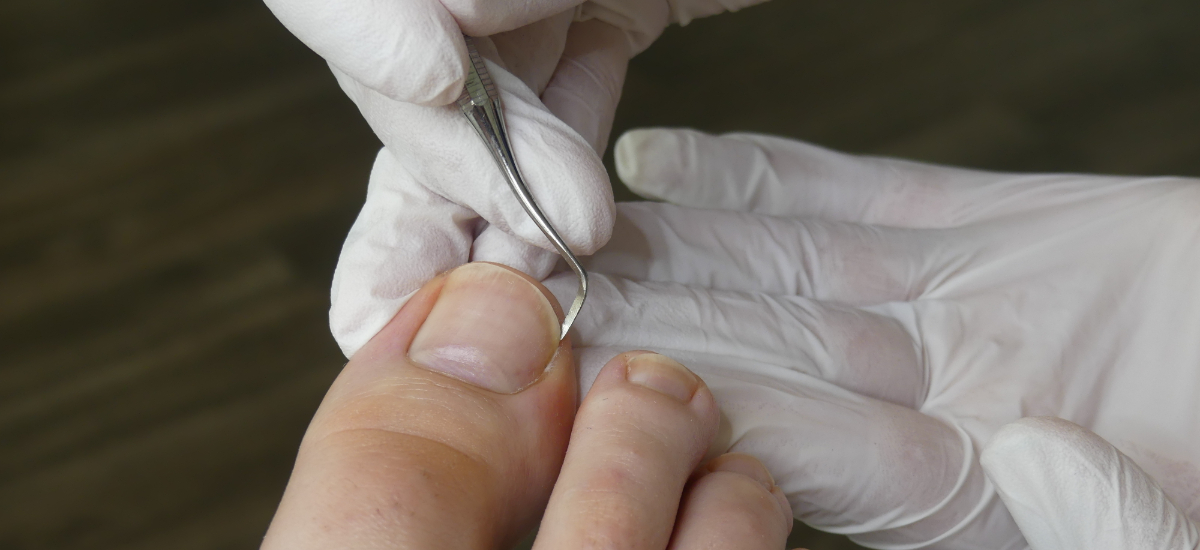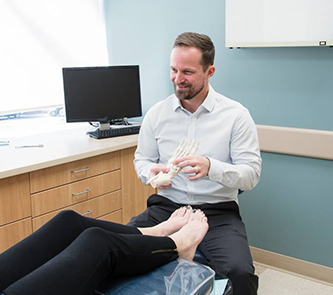Ingrown Toenail Treatment
We probably don’t have to tell you that an ingrown toenail can be a very unpleasant experience. As the edge or border of the nail curves and digs into the surrounding skin, symptoms like pain, swelling, and tenderness are almost certain to follow.
Mild ingrown toenails can sometimes be treated at home, provided you have no potentially complicating health conditions. However, if your ingrown toenails are severely painful, are infected (or you are at high risk of developing an infection), or keep coming back again and again, we strongly recommend you come in to see us for professional ingrown toenail treatment.
Professional treatment for ingrown toenails from the experts at our Portsmouth and Nashua offices is quick, convenient, and can even stop them from coming back permanently.
What Causes Ingrown Toenails?
There are several reasons why you may have developed an ingrown toenail. These include:
- Trimming toenails too short, especially in the corners. This can encourage the skin surrounding the nail to begin folding over it. The best practice is to cut relatively straight across, with just a slight curve.
- Wearing shoes that don’t fit. Shoes that are too tight can force the skin against the toenail and encourage inward growing. Shoes that are too loose can slide around on your foot, leading to repeated impacts between the shoe and the toenail.
- An external injury or other toenail condition. Stubbing your toe or dropping a heavy object on it, for example, can lead to wayward nail growth. A fungal toenail infection can also alter the direction of growth and cause an ingrown toenail.
- Unlucky genetics. Some people are simply born with toenails that are extra curvy and more likely to become ingrown.
Understanding the causes of your ingrown toenail can help you avoid developing them repeatedly. Even if the cause is genetic, we can still help you correct the root issue.
When Should I See a Doctor for Ingrown Toenail Treatment?
There’s no reason you need to wait to see a doctor about an ingrown toenail. In fact, we honestly recommend that you don’t wait at all. While home treatments can work for mild cases, they do take time and there’s always a risk that you’ll develop a much more serious and painful infection anyway.
Professional treatment is so quick and easy that, in our opinion, calling our office is usually the best call regardless of circumstance.
However, there are a few instances when you absolutely must abandon any attempts at home care and call us right away:
- Your ingrown toenail is very painful. There’s no reason to keep suffering, especially when we can provide rapid relief.
- You notice any signs of infection. Severe pain is one common sign. Others include swelling, redness or soreness that seems to be spreading, or drainage of pus.
- Your ingrown toenails don’t go away or keep coming back again and again. This is a sign that a chronic underlying factor—usually genetics—must be identified and addressed.
- You have diabetes or poor circulation. It’s best to have any type of ingrown toenail, sore, or infection checked out right away due to the greatly heightened risk of severe infection.
We understand that ingrown toenails are a serious matter and will prioritize seeing you as soon as possible.

How Do I Treat Ingrown Toenails at Home?
If you’re determined to attempt DIY treatment yourself, provided that none of the scenarios outlined above apply to your situation, read on.
Soak your foot in warm water with a little bit of Epsom salt for about 15 minutes at a time, 3-4 times per day. This will help relieve mild symptoms. After each soak, pat the area dry. Apply antibiotic ointment and loosely wrap with a fresh bandage.
None of the other “home remedies” you may have read about (such as cutting a V-shaped notch in the nail) are effective or advisable, and we discourage you from attempting them.
Wear open-toed or roomy shoes to avoid placing excess pressure on the nail.
If this home treatment method isn’t producing the desired results, or your condition worsens, or you just want it all to be over, call us for in-office care.
And again, if your nail is infected or severely painful, or you have diabetes, poor circulation, or are immunocompromised, call us immediately. Do not attempt home care.
How Does a Podiatrist Treat Ingrown Toenails?
There are a few different options we may recommend, depending on our office examination. However, in most cases we will perform a very minor nail surgery procedure to excise the part of the nail that has become painfully ingrown.
You’ll be given a local anesthetic via an injection. This is moderately uncomfortable, but it takes less than a minute to numb up the toe. After that, you should feel no pain or discomfort whatsoever.
The procedure to remove the ingrown part of the nail is very quick, and afterward we’ll bandage the toe, prescribe antibiotics (if necessary) and send you on your way. By the time the anesthetic wears off, your symptoms should already be much improved.
Most people are able to return to normal activities like work and school within a day. Some physically strenuous activities may need to be put on hold for a week or two.
For people with recurring ingrown toenails, we may also recommend cauterizing the nail root right in the corner of the nail. This prevents the ingrown edge of the toenail from growing back, usually permanently. Only a very small portion of the root must be removed, so while the nail will grow back slightly “thinner,” this is typically barely noticeable when compared to an unaltered toenail.

Get the Relief You Deserve
By far, the most common response we get from patients after an ingrown toenail surgery is some variation on, “Wow, that was it?” Followed closely by “I should have done this sooner!”
Whether you’re dealing with your first ever ingrown toenail or you’ve been getting them for years, fast and effective relief is available. We don’t want you to keep suffering needlessly! To request an appointment and learn more about your options, give us a call or complete the contact form at the bottom of this page. We not only help those from New Hampshire but also see patients from Maine including Berwick along with North and South Berwick.
Pay Your Bill
Make a payment online through our payment portal or Care Credit!
Portsmouth Office
14 Manchester Square, Suite 250
Portsmouth, NH 03801
Nashua Office
17 Riverside Street, Suite 205
Nashua, NH 03062
Website Hosted by SC Digital



